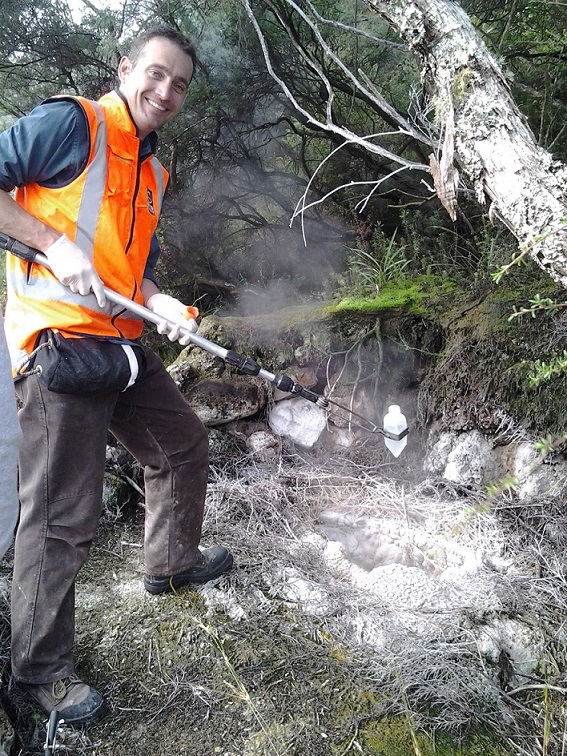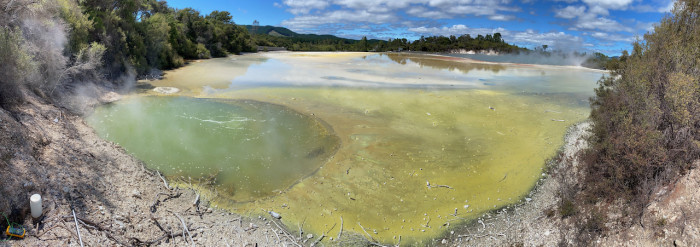Stuck at home: Why is a novel heat-loving bacterium only found here?

Associate Professor Matthew Stott from Te Whare Wānanga o Waitaha the University of Canterbury asks why a type of bacteria that appears to tolerate a range of hot spring conditions is abundant in Aotearoa but isn’t found anywhere else
Published on 3 Whiringa-ā-rangi November 2022
Geographic isolation enables the evolution of new organisms. Some species develop traits that allow them to migrate and populate widespread regions of the globe, while others are limited (endemic) to localised areas. Endemism might be expected to be relatively common amongst extremophiles - bacteria and archaea that live in extreme habitats such as hot springs and volcanic vents - but microbial endemism is rare. Traits such as large population densities, rapid growth rates, and the ability to become temporarily dormant allow bacteria to distribute over time and space with relative ease. Even the world’s most isolated volcanic system, Mt Erebus in Antarctica, hosts globally common microbes thought to have been transported there through large volcanic eruptions.

The Artist's Palette thermal lake at Waiotapu, Rotorua. Photo: Matthew Stott
Imagine the surprise then, when Associate Professor Stott and colleagues recently identified a bacterial genus, Venenivibrio, and found that while it is the most abundant microorganism across Aotearoa hot springs, it isn’t known anywhere else. Given the range of temperatures, chemistry, and acidity of New Zealand hot springs, the bacterium can obviously tolerate a range of environmental conditions and migrate relatively easily across short distances. In contrast, its sister genus Sulfurihydrogenibium, which has the same broad physiological characteristics, is readily identified in international hot springs. What limits Venenivibrio to our islands?
Through this Marsden Fund Standard grant, Associate Professor Stott and team aim to understand what makes Venenivibrio the ‘kiwi’ of microorganisms. They will investigate questions such as: how does Venenivibrio distribute domestically? Does it lack the traits to survive long distance migration? Is there something unique about Aotearoa hot springs that Venenivibrio, but not Sulfurihydrogenibium, is dependent on? In collaboration with Ngāti- Tahu-Ngāti Whaoa (mana whenua of the type strain), they hope to learn what makes this species a taonga, and how it can be cared for through data sovereignty, management, and conservation.
